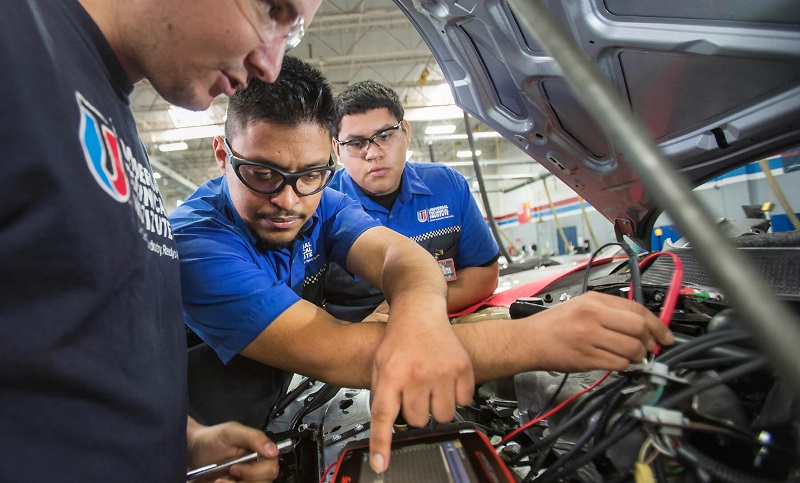
Hudly is a great tool to avoid speeding tickets on the road. This app provides drivers with sharp imagery at all times. It can also adapt to your surroundings, so you can see the road clearly. There are many benefits to using Hudly, and they are well-worth it. You can read on to learn more about Hudly as well as how to buy yours.
Hudly Wi-Fi
With Hudly Wireless, you'll stay connected and reduce driving stress while casting critical information right in your line of sight. Everything you need to know about speed and navigation is at your fingertips. It allows you to concentrate on driving rather than worrying about your phone. Here's how this works:

The Hudly Wireless measures 7x5 inches and is approximately 2 inches high when the base has been attached. The black plastic shell attaches to the dash by using a removable adhesive. The device is not too bulky and can be placed on any dashboard, but it's difficult to fit it above the steering wheel. Hudly can also be placed in the central part of the dashboard.
Another convenient feature of Hudly is that it casts your phone's screen onto your dashboard. You can use all your favorite apps with it, even navigation. The screen is 6.2 inches, which is big enough for you to see even in a wide-angle view. This device works with almost all Android phones or tablets. It has a full 800x480 resolution. Easy installation is possible because it doesn't connect to your car’s OBD port.
HudlyLite
This $59 accessory beams speed and RPM information onto windshields. This compact device, which is lightweight and portable, can be powered by the ignition. There are also built-in sensors to protect it. It includes an automatic chime as well as a rubber mount that will hold it in its place. The Hudly Lite is a great option for older drivers or those with a weak foot. The speedometer readout can vary depending upon the car manufacturer, but the Hudly Lite offers calibrated readings.

OBD2 ports are available for gas-powered vehicles. OBD2 stands for Onboard Built-In Diagnosis, and all modern cars have this port. This is where you connect the Hudly LITE, a head-up display that's perfect for driving on the road. Although most cars have HUDs but these are usually only found in high-end cars, the Hudly Lite has many of the same benefits at a lower price.
FAQ
What qualifications is required to become an mechanic?
To become a mechanic, you'll need to pass a series of exams. These exams include:
-
A general knowledge assessment
-
A practical exam
-
An apprenticeship test
These tests will ensure you are familiar with the fundamental concepts of mechanics and physics before starting to work as a mechanic.
You'll be eligible for work as a mechanic after you have passed the tests. But, you will still need an apprenticeship. This will involve trade training.
To fully understand the mechanics of vehicle repairs, you'll need workshops and classes. You'll also have to work alongside experienced mechanics.
If you want to be a successful mechanic, it will take concentration and attention to detail. You'll need to pay close attention to every aspect of vehicle repairs.
To become a successful mechanic you'll need patience. If you don't like to follow instructions, then this may not be the right career path for you.
This job is for you if you are passionate about cars and love fixing them.
Is it hard to get a job working as an auto mechanic?
Yes, it can be very easy. Many garages advertise their vacancies online, and many people apply just because they think it might be fun. Try applying to a few jobs and seeing if the garages accept student applications. If you don't know anyone working in the industry, ask your friends and relatives. They might be happy to recommend someone.
Is a career in automotive mechanic promising?
If you are determined to excel, the automotive industry offers many opportunities. The best way to succeed in this field is by working hard and learning as much as possible from others.
Your job will require you to be a good communicator as you'll be talking to customers and other employees. You should also be willing to travel and work long hours, making commuting difficult.
If you are interested in a career working in automotive, then consider attending classes at community colleges. Many schools offer programs for students who are interested to learn about auto sales, customer service, or repair.
Mechanical engineering is a good choice if you are interested in pursuing a degree. A bachelor's degree can be obtained in four years.
In addition, many companies will hire graduates straight out of school. So, it is wise to begin searching for employment while you are still able to study part time.
After you complete your education, you may need to undergo some type of training before you can become an automotive technician.
This means that you must pass the Automotive Service Excellence exam. This test covers engine maintenance and brakes as well as suspension.
Once you pass the ASE test, your license can be applied for by the National Institute for Automotive Service Excellence.
A license allows you to perform repairs on vehicles owned by private individuals. In exchange, you'll receive compensation based on the number of services performed.
It is important to remember that not all states require licensing. A license is required if you plan on working outside of your home state.
Some states don’t issue licenses until a certain amount has been completed. If this is you, you may need another option.
What length is an automotive course?
A three-year course in automotive is required.
The first year is spent learning about cars and theory. The second year is dedicated towards practical training. This includes learning how to drive, fix engine problems, and doing other maintenance jobs around your car. The last year is spent at a local shop, where you will get practical experience with real-world problems.
What length is an automotive mechanic apprenticeship?
The apprenticeship to become an automotive mechanic takes about three years. This includes two years in school and two as an apprentice. The first year is dedicated to learning the theory and practical skills of the trade. You'll also learn how tools can be used safely and efficiently during this year. After the completion of the first year, you will spend another year on the job training. Here you'll gain valuable experience in different trades. These periods will also give you the chance to take formal courses.
The final year of the program is spent gaining qualifications and becoming certified in the field. These include NVQs, which are obtained after passing industry-specific exams. There are also HNCs (Higher National Certificates), which cover general subjects like management, business administration, customer service, and more. City & Guilds certificates may be available for those who are interested in becoming qualified in specific trades.
Statistics
- The U.S. Bureau of Labor Statistics (BLS) reports that the job outlook for automotive service technicians and mechanics is expected to decline by 4% from 2019 to 2029. (indeed.com)
- According to the BLS, total auto technician employment is expected to exceed 705,000 by 2030. (uti.edu)
- There were 749,900 jobs available for automotive service technicians and mechanics in 2016, which is expected to grow by six percent through 2026. (jobhero.com)
External Links
How To
How to correctly diagnose your vehicle for repairs
First, look at the symptoms of your car to determine if it needs repair. You can then follow these steps for a proper diagnosis of your vehicle.
-
Check engine lights. The dashboard light indicators, including the engine light, oil pressure gauge, battery light indicator, coolant temperature gauge and RPM gauge, should be checked. If they have been flashing for more days than usual, it could be a sign that something is wrong with the vehicle.
-
Take a look at the treads. Tires that are worn can cause issues with handling and braking. It is also important to inspect the wheel treads. You should ensure that they are clean and smooth. You can do this by taking off the wheels. To check the condition of your treads, use a flashlight.
-
Observe the brake fluid level. You should always keep track of the amount of brake fluid in your vehicle. This will ensure that your brakes run smoothly. Your brakes may fail if the brake fluid level drops.
-
Test the suspension system. Most vehicles have a suspension system that absorbs shocks and vibrations. It provides better control and allows smoother acceleration and deceleration. You might notice a wobbly feeling or uncontrollable shaking in your vehicle if it has a problem with its suspension. You can test if your vehicle has a suspension problem by putting weight on either the front or back axle to see how it moves.
-
Examine the steering wheel. The steering columns are what connect the steering knob to the rest. Accidents often damage steering columns. You should replace the steering column if it is loose or weak.
-
The exhaust pipe should be observed. Exhaust pipes help move gases from the combustion chamber to the atmosphere. Exhaust pipes that are cracked or leaking can allow harmful fumes to enter your cabin. You should also fix any bent tailpipes immediately.
-
Check under the hood. To check for unusualities, look under the hood. You could have fluids leaking from the engine. A professional technician should be contacted if your engine compartment emits an unusual smell.
-
It is important to inspect the air filter. The outside environment collects dust and other particles in the vehicle's filter. Dirty air filters can cause your vehicle to run poorly. Replace your air filter regularly.
-
Check the fan belt. Your vehicle's fanbel connects the engine and transmission. The engine will not turn if the fan belt breaks. Replacing the belt is simple. All you need are a screwdriver & pliers.
-
Make sure you inspect the radiator hoses and hoses. The radiator hose is used to carry water from the radiator to your engine. It can become cracked or damaged and leak hot liquid onto your engine. To repair the hose, you will only need to use a pair needle-nosepliers and a wire brush.
-
Check the windshield wipers. Windshield wipers use electricity to remove snow and rain. If they stop working, they could leave streaks on your window glass. Change the washer fluid to fix the problem.
-
You should inspect the cables. Batteries provide power to electrical systems inside your car. Always disconnect the negative wire before you replace batteries. Failure to do so can damage your alternator.
-
Make sure your headlights are working properly. Headlights are used to illuminate the road ahead. It can lead to poor visibility if they aren't working properly. To check if the bulbs have gone out, you can inspect them.
-
Pay attention to the lights. Lights warn other drivers when you approach them at night. If one doesn't work, it could distract you and lead to an accident.
-
Check the brakes. Before you get in a car accident, your brakes will be slowing down your vehicle. You could lose control of the car and cause a crash if they don't work properly.
-
Change the oil. The oil keeps your engine well lubricated. It helps keep metal parts from getting too worn down. It is recommended that you change your oil at least once per month.